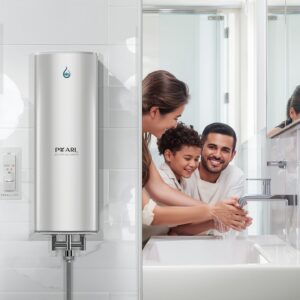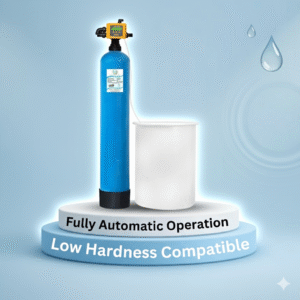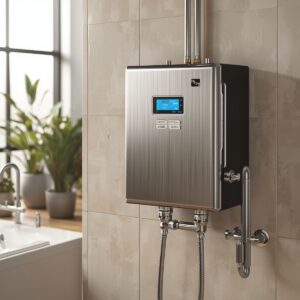An inline carbon filter is one of the simplest yet most effective solutions for improving water and beverage quality. Whether you are looking to enjoy cleaner drinking water at home, protect your appliances, or ensure great-tasting coffee and ice at your business, an inline carbon filter is a compact, cost-effective, and highly efficient choice. These filters are becoming increasingly popular because of their ease of use, low maintenance, and ability to remove impurities such as chlorine, sediments, and unpleasant odors from water.
What is an Inline Carbon Filter?
An inline carbon filter is a small cylindrical filter that connects directly to your water supply line. Unlike larger filtration systems, it does not require a separate housing or large installation space. Instead, it works right where it’s needed—whether under your sink, behind your refrigerator, or on a coffee machine water line. The main ingredient inside an inline carbon filter is activated carbon, a highly porous form of carbon with an impressive surface area. This activated carbon captures and holds onto impurities through a process known as adsorption, making your water cleaner, fresher, and better tasting.
The compact nature of an inline carbon filter makes it ideal for both household and commercial applications. From under-sink drinking water systems to use in aquariums, RVs, vending machines, and ice makers, these filters are versatile and practical.
How Does an Inline Carbon Filter Work?
The working process of an inline carbon filter is straightforward but very effective. As water flows through the filter, the activated carbon inside acts like a sponge. The porous structure of the carbon traps contaminants such as chlorine, volatile organic compounds (VOCs), some pesticides, and even certain chemical residues that affect taste and smell.
Here’s a simple breakdown of the process:
Water enters one side of the inline carbon filter.
Contaminants are adsorbed by the carbon media inside.
Clean, fresh water exits from the other side, ready for drinking, cooking, or other uses.
While these filters do not remove heavy metals or microorganisms completely, they significantly improve water quality, especially in terms of taste and odor.
Benefits of Using an Inline Carbon Filter
There are several benefits to installing an inline carbon filter, and these benefits make it one of the most recommended choices for homeowners and businesses alike:
1. Improved Taste and Odor
One of the primary advantages of an inline carbon filter is its ability to remove chlorine and bad odors from water. If your tap water tastes or smells unpleasant, a good filter can instantly transform it.
2. Compact and Easy to Install
Inline carbon filters are designed to be installed directly in the water line, which means no large tanks, no bulky equipment, and no complicated plumbing. They are perfect for small spaces.
3. Versatile Applications
Inline carbon filters are used in refrigerators with ice and water dispensers, coffee makers, RV water systems, vending machines, aquariums, and more. They are extremely versatile and can be fitted wherever a clean water source is needed.
4. Cost-Effective Filtration
Compared to larger multi-stage filtration systems, an inline carbon filter is affordable and provides excellent value for money. It is an excellent choice for those looking for an entry-level water filtration solution.
Price Range of Inline Carbon Filters
The inline carbon filter price depends on the brand, size, and purpose. For domestic applications, you can find good-quality filters starting from $20 to $60. For commercial uses like coffee shops or ice machines, filters can cost between $80 and $200, depending on the level of filtration and flow rate required. Considering their longevity (typically lasting six months to one year), they offer an economical way to improve water quality.
Maintenance and Replacement
Maintenance of an inline carbon filter is very easy. Most filters need to be replaced every 6 to 12 months, depending on water quality and usage. Replacing a filter is as simple as disconnecting the old one and installing a new one—no professional help is usually needed.
To ensure consistent performance:
Check the manufacturer’s recommended replacement schedule.
Replace the filter sooner if you notice a decrease in water flow or a change in taste.
Why Choose an Inline Carbon Filter?
Choosing an inline carbon filter is a practical decision for anyone looking for a simple way to get cleaner and better-tasting water. Instead of dealing with heavy systems or frequent bottled water purchases, an inline carbon filter gives you a continuous supply of improved water directly from your tap or appliance.
FAQs
Q1: How long does an inline carbon filter last?
Most inline carbon filters last between 6 months to 1 year, depending on usage and water quality.
Q2: What does an inline carbon filter remove?
An inline carbon filter removes chlorine, bad tastes, odors, and some chemicals like pesticides and VOCs, improving the overall quality of your water.
Q3: Can I install an inline carbon filter myself?
Yes, installation is simple and can usually be done without professional help. They are designed to connect directly to water lines.
Q4: Is an inline carbon filter suitable for my refrigerator?
Absolutely. Inline carbon filters are commonly used for refrigerators with ice and water dispensers to ensure fresh, clean water and clear ice cubes.


